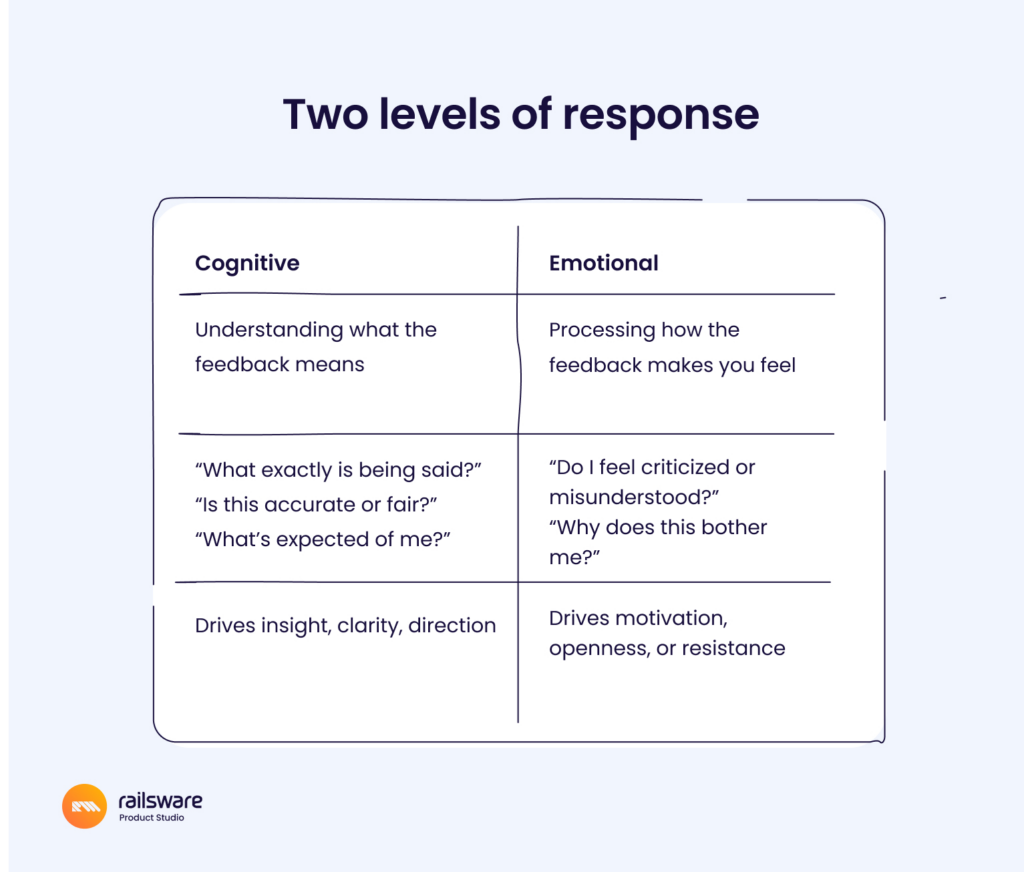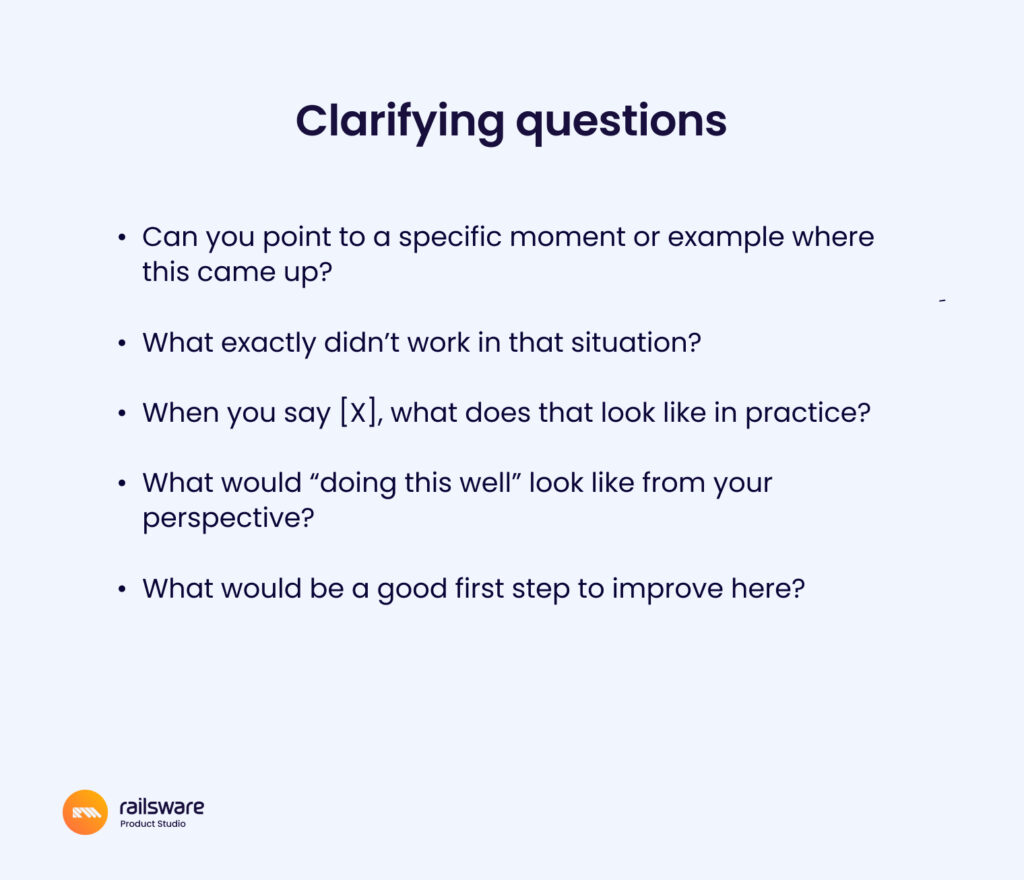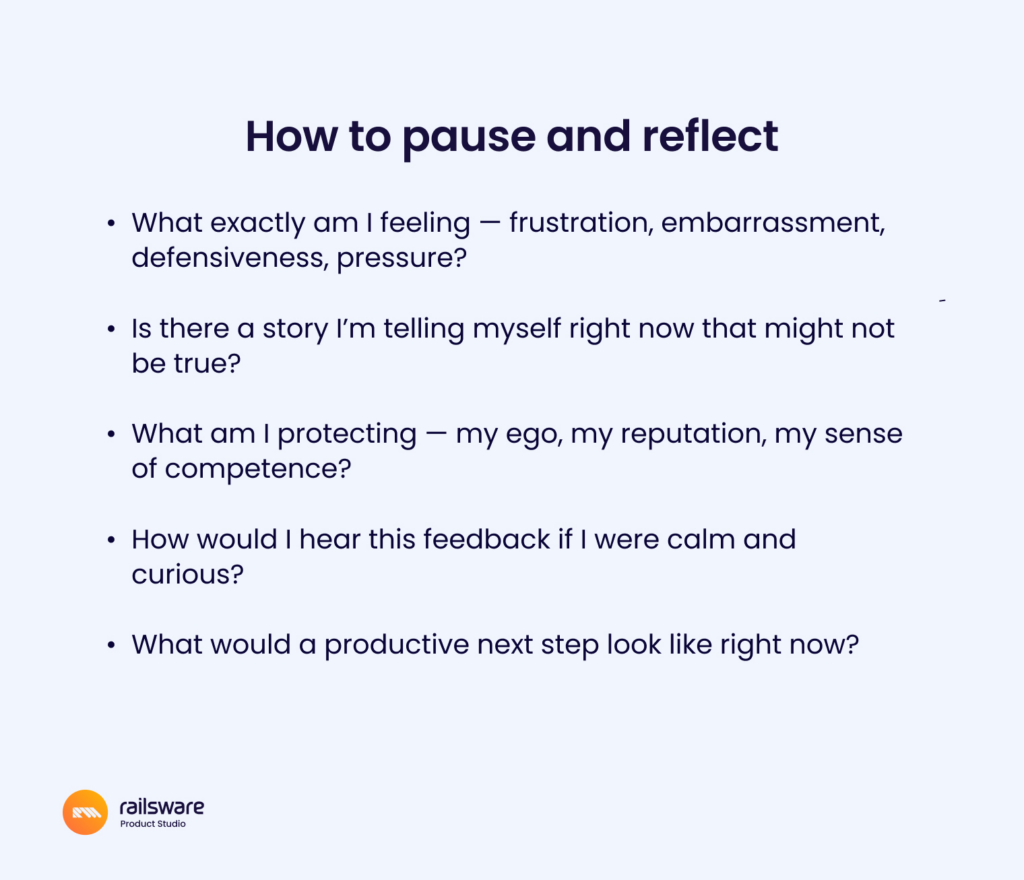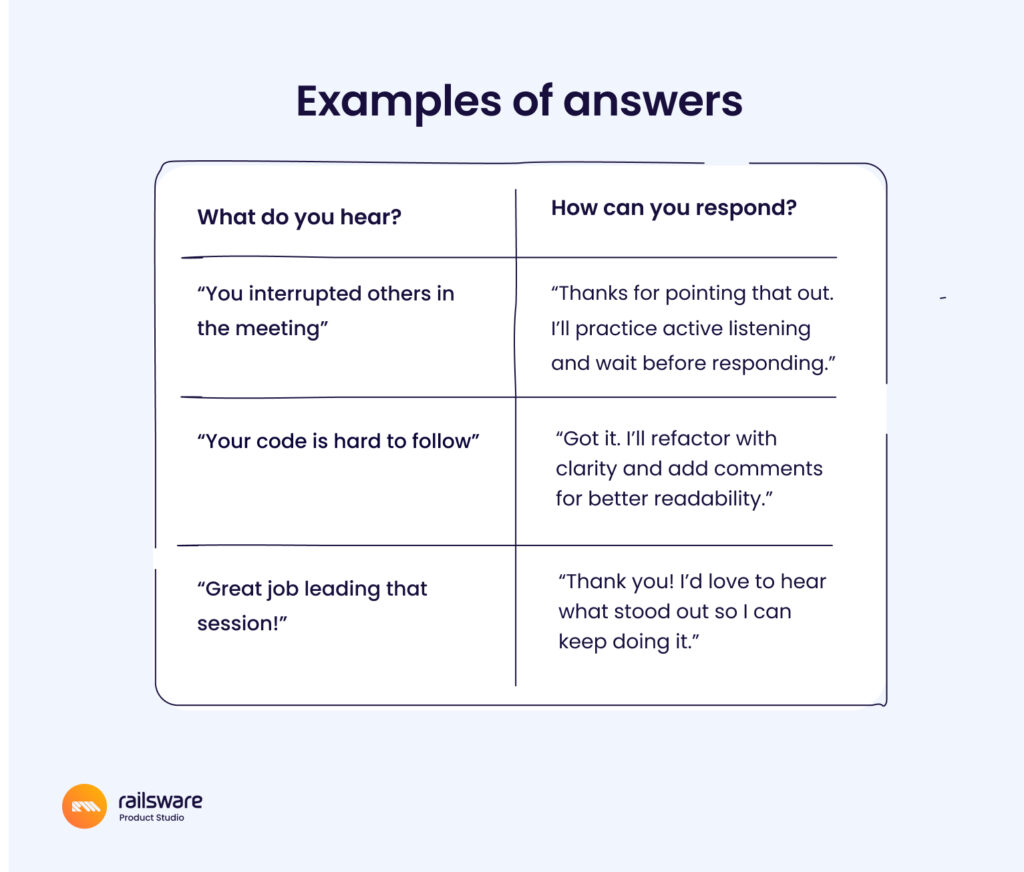Have you ever felt frustrated, hurt, or even angry after hearing constructive criticism from your team lead — even though you worked really hard? My 8-year experience in talent management tells me that it’s normal. We all go through it. The key is learning how to work with those emotions, so your brain doesn’t shut down, but instead, turns feedback into fuel for growth.
To be clear: we’re talking about reasonable, well-intentioned feedback — not the toxic, passive-aggressive, or entirely unhelpful kind.
In this piece, I’ll unpack why even constructive feedback can trigger strong emotions — and how to train your mind to respond in ways that support growth instead of resistance.

How your mindset helps — or holds you back
Feedback, whether it comes during a performance review, a career growth discussion, or as part of a company’s day-to-day culture, often triggers more than just professional reflection. It affects us on two levels:

How we process these two layers often depends on our mindset, the mental framework through which we view our abilities and potential. Psychologist Carol Dweck introduced a helpful model for understanding this: the growth mindset versus the fixed mindset. It explains why some people use feedback as a springboard for growth, while others feel threatened or discouraged by it (If you’re curious, her TED Talk is worth watching).
So what’s the main difference?
A person with a growth mindset believes their intelligence, skills, and abilities are not fixed, and they can be developed over time through effort, learning, and persistence. For them, feedback isn’t a judgment of who they are, but a guide to where they can improve. They think: “I’m not there yet, but I can get there.”
When told, “You need to work on your analytics,” they don’t spiral into “I’m bad at this.” They say, “Okay, time to level up. I’ll take a course, ask for help, practice more.”
On the flip side, a fixed mindset views talent and intelligence as something you either have or don’t. So when such person receives critical feedback, it often feels like a personal attack. If they hear, “This part of your project didn’t land well,” they might percieve it as “I’m not smart enough” — and start getting defensive or shutting down.
But here’s the good news:
You can shift from a fixed to a growth mindset.
How to change on a cognitive level
Learning to benefit from feedback truly starts with one crucial mental shift: reframing your interpretation. Instead of defaulting to “I failed,” try asking yourself, “What did I learn from this experience?”
This shift is part of what psychologists call cognitive reframing — an intentional effort to view a situation through a more constructive lens. At its core, this is cognitive work. It doesn’t require suppressing your emotions or pretending feedback doesn’t sting.
Instead, it means learning to manage your interpretation of what was said, moving away from a place of defensiveness and toward a mindset of curiosity and learning. Here is how to do it:
1. Listen all the way through
Let the other person share their full point of view before you respond. Don’t interrupt or rush to conclusions, even if it’s uncomfortable. Feedback isn’t always easy to hear, but it’s often easier to understand when you give it space to land.
2. Avoid preparing your defence
It’s natural to want to justify your actions, especially if you feel misunderstood. However, when you start mentally drafting a response while the other person is still talking, you’re no longer listening. Remind yourself: you’re on the same team, working toward the same goal.
What’s also important to remember is that meaningful feedback is rarely about who you are as a person. More often, it’s about a specific situation that could have been handled differently. When we remove ego from the equation, we’re free to engage with feedback as useful data, rather than a personal attack.
3. Ask clarifying questions
If something is unclear, don’t play a guessing game. Instead, ask for examples, like:

These kinds of questions help move past surface-level criticism and toward shared understanding.
4. Be aware of your nonverbal signals
Body language often reveals what words don’t. If you’re clenching your fists, avoiding eye contact, or giving sharp replies while saying that you understand, the message doesn’t come through. Your tone, posture, and facial expressions are part of the conversation as well.
5. Reframe the experience even mid-conversation
If you feel triggered, try reminding yourself in real time that this is a growth moment. You don’t have to agree with everything, but you can still learn something here. This simple mental prompt can reduce defensiveness and increase your ability to respond thoughtfully.
6. Anchor your response in your values
Treat feedback like a gift. This way, any gift only becomes yours when you choose to accept it. Once you do, you can examine it, understand its value, and decide how (or if) you want to use it.
If the feedback challenges values that feel non-negotiable for you, it might be a sign that your environment isn’t the right fit. You don’t have to take every piece of feedback on board but you do need to process it with honesty and self-awareness.
When feedback does support your goals, it becomes an incredible advantage. Instead of feeling lost or stuck, you gain clarity about what to work on and where to grow. It’s like being handed a roadmap in unfamiliar territory. It’s also okay to respond with something like:
- Thank you, I understand your perspective. Right now, this isn’t a priority for me, but I’ll keep it in mind.
Above all, remember:
You don’t control the feedback, but you do control your response. So don’t react impulsively, choose how to engage with clarity, curiosity, and intention.
How to change on an emotional level
Emotions often arise before rational thought. From an evolutionary standpoint, it makes sense. Our emotional systems (like the amygdala) developed to react quickly to danger or opportunity before the thinking brain (the prefrontal cortex) can process the situation. For example, if you hear a loud crash nearby, your body might jump or tense up before you even realize what occurred.
In the workplace, however, this automatic response can sometimes hinder you, especially during challenging interactions, such as receiving feedback. The good news is that you can shift your response patterns and build more intentional habits over time.
Here are several strategies to help:
1. Create a space between reaction and response
When strong emotions come up, the most helpful first step is to pause. This short gap allows your rational mind to catch up and gives you a choice in how to respond:

If the emotion is strong, taking a brief break for a few minutes can help you return with more perspective and composure.
2. Take ownership without self-criticism
When you accept responsibility for your role in a situation, you can show your openness to growth. For example, saying, “I missed something, and it impacted the team,” helps to see that you’re accountable and ready to improve. Moreover, you can use it as a chance to suggest some steps that may improve your results. You can check possible answers below:

3. Work with feedback regularly
If feedback is rare and only comes once in a while, it can feel overwhelming. That’s why ask your team and create frequent, brief, and expected feedback exchanges. This approach normalizes feedback, reduces emotional tension, and makes it easier to act on insights promptly.
Moreover, you can improve your response patterns. I recommend tools like the TFA cards by Six Seconds (Think, Feel, Act). After a challenging moment, take a few minutes to ask yourself:
- What were you thinking?
- What were you feeling?
- How did you act?
Reviewing a few past situations this way can help you notice recurring triggers or habits. If you find that certain topics or environments consistently evoke strong reactions, you can start preparing for them more intentionally. So your response feels less like a surprise and more like a skill.
Be more aware of your reaction
Feedback isn’t just about fixing what’s broken. It’s an opportunity to grow intentionally, develop emotional agility, and deepen self-awareness.
You don’t need to suppress your feelings. Instead, look at emotions as data. So, each basic emotion alerts our attention and pushes us to move.
Over time, your ability to engage calmly and constructively with feedback will become one of your most valuable professional skills.
